PREVIOUS
The Election commission of India and Elections History - Part 2
(இதன் தமிழ் வடிவத்திற்கு இங்கே சொடுக்கவும்)
Election Machinery
- The Election Commission of India is a three-member body, with one Chief Election Commissioner and two Election Commissioners.
- The President of India appoints the Chief Election Commissioner and the Election Commissioners.

Chief Electoral Officer (CEO):
- The CEO supervises all election-related activities within a state or Union Territory, operating under the overall direction of the Election Commission.
- This official is appointed by the Election Commission in consultation with the respective state or Union Territory government, ensuring effective coordination and administration of elections.
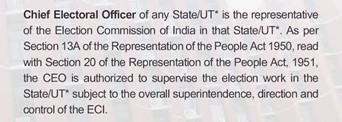
District Election Officer (DEO):
- Tasked with overseeing the electoral process within a district, the DEO operates under the authority of the Chief Electoral Officer.
- The Election Commission appoints the DEO in consultation with the state government, empowering them to manage and coordinate election activities at the district level.
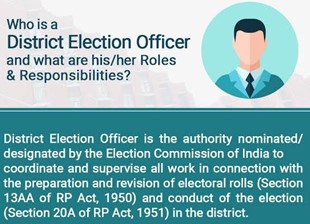
Returning Officer (RO):
- Responsible for conducting elections in specific parliamentary or assembly constituencies, the Returning Officer ensures the integrity and fairness of the electoral process.
- Appointed by the Election Commission in consultation with the state or Union Territory government, the RO plays a crucial role in overseeing elections within their designated constituencies.
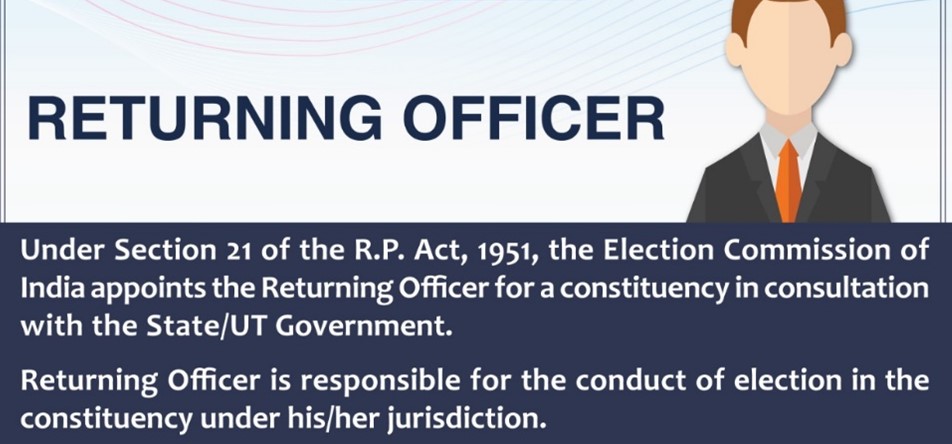
Electoral Registration Officer (ERO):
- The ERO is tasked with the preparation and maintenance of electoral rolls for parliamentary and assembly constituencies.
- Appointed by the Election Commission in consultation with the state or Union Territory government, the ERO plays a pivotal role in ensuring accurate and up-to-date voter registration.
Presiding Officer:
- Operating at the polling station level, the Presiding Officer is responsible for conducting the polling process with the assistance of polling officers.
- Appointed by the District Election Officer (or Returning Officers for Union Territories), Presiding Officers play a key role in ensuring the smooth and orderly conduct of elections at polling stations.
Observers:
General Observers:
- These officials oversee the entire electoral process to ensure its fairness and smooth conduct.
- They closely monitor each stage, from voter registration to result declaration, to uphold the principles of free and fair elections.
Expenditure Observers:
- Deployed from the central government services, Expenditure Observers scrutinize candidates' election spending.
- They prevent undue influence on voters and ensure spending remains within legal limits.
Police Observers:
- IPS officers appointed as Police Observers maintain law and order during elections.
- They monitor security deployment, assess the situation, and coordinate civil and police administrations for a conducive environment.
Awareness Observers:
- Introduced in the 16th Lok Sabha Elections, Awareness Observers focus on enhancing voter awareness and participation.
- They monitor interventions to improve voter turnout and oversee measures against issues like 'Paid News.'
Micro Observers:
- These officials assist in vote counting under the supervision of Returning Officers and other appointed Observers.
Electoral Process Overview:
- Elections for both Lok Sabha and State Assemblies operate on a first-past-the-post system in constituencies.
- This system allows electors to cast one vote each for a candidate, with the candidate receiving the highest number of votes declared elected.
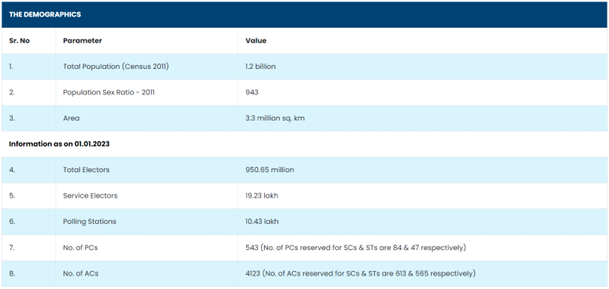
Assistant Expenditure Observers:
- Working alongside Expenditure Observers, they focus on video graphing major campaign events and promptly addressing any complaints of electoral malpractice.
Election Process
Time of Elections
- Elections for the Lok Sabha and every state Legislative Assembly have to take place every five years, unless called earlier.
- The President can dissolve Lok Sabha and call a General Election before five years is up, if the Government can no longer command the confidence of the Lok Sabha, and if there is no alternative government available to take over.

Schedule of Elections
Election Commission's Role:
- When the five-year term ends or the legislature dissolves, the Election Commission prepares for elections within six months as per the Constitution.
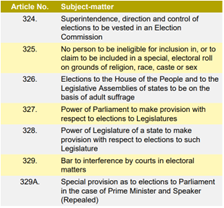
Announcement of Schedule:
- The Commission announces the election schedule in a major press conference, activating the Model Code of Conduct for candidates and parties.
Notification for Candidates:
- Notifications are issued calling for nominations, allowing candidates to file in their desired constituencies, scrutinized by the Returning Officer.
Nomination Scrutiny:
- Candidates' nominations undergo scrutiny by the Returning Officer, who validates them, allowing withdrawal within two days of scrutiny.
Campaign Period:
- Contesting candidates enjoy a two-week political campaign period before the actual polling date.
Polling Process:
- Due to the vast electorate, polling is conducted on multiple days for national elections.
Counting and Results:
- A separate date for counting is set, with results declared by the respective Returning Officers for each constituency.
List of Elected Members:
- The Commission compiles the list of elected members, issuing notifications for the constitution of the House.
Convening of House:
- The President (for Lok Sabha) or Governors (for State Assemblies) convene their respective Houses for sessions.
Oath or Affirmation:
- Candidates must make and subscribe an oath or affirmation before authorized officers like Returning Officers, Assistant Returning Officers, or in specific cases, medical superintendents or diplomats abroad.
Election Campaign
Nomination Process:
- Candidates have a week to submit their nominations, scrutinized by Returning Officers with the possibility of rejection if found irregular, allowing withdrawal within two days.
Official Campaign Period:
- The official campaign spans at least two weeks from the nomination list's compilation, ceasing 48 hours prior to polling closure.
Model Code of Conduct:
- Political parties and candidates must adhere to guidelines set by the Election Commission to ensure a fair campaign, prevent clashes, and maintain peace until results.
Manifestos and Slogans:
- Parties issue manifestos outlining their programs, leader strengths, and opposing parties' failures.
- Slogans are utilized to popularize parties and issues.
Campaign Tools:
- Pamphlets, posters, rallies, and meetings are employed to persuade supporters, criticize opponents, and disseminate promises of reform.
Personal Appeals:
- Candidates traverse their constituencies, making personal appeals and promises of reform to influence potential supporters and gain their favour.
Polling Days
- Polling is normally held on a number of different days in different constituencies, to enable the security forces and those monitoring the election to keep law and order and ensure that voting during the election is fair.
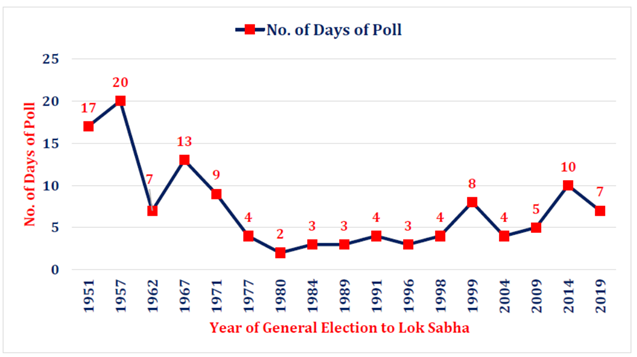
Ballot Papers and Symbols
- After nomination of candidates is complete, a list of competing candidates is prepared by the Returning Officer, and ballot papers are printed.
- Ballot papers are printed with the names of the candidates (in languages set by the Election Commission) and the symbols allotted to each of the candidates.
- Candidates of recognised parties are allotted their party symbols.
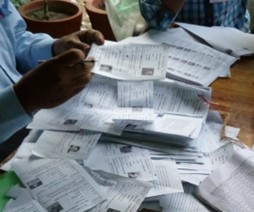
Voting Procedure
Secret Ballot Voting:
- Voting is conducted via secret ballot to ensure privacy and impartiality.
Polling Station Locations:
- Polling stations are typically established in public institutions like schools and community halls. Efforts are made to ensure proximity to voters, with a maximum of 1500 voters per station.
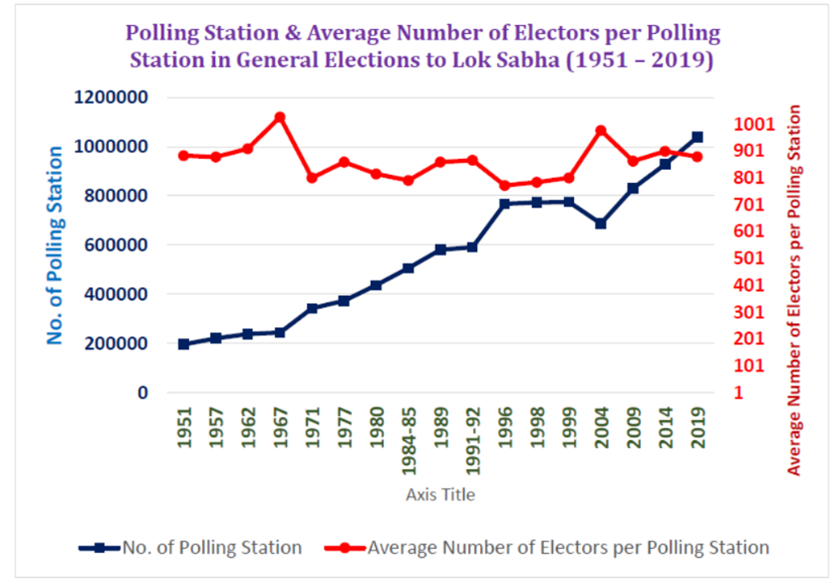
Polling Station Operations:
- Each station operates for a minimum of eight hours on election day.
- Voters are verified against the electoral roll and provided with a ballot paper.
Voting Process:
- Voters mark their choice on the ballot paper within a screened compartment and then insert it into a common ballot box, ensuring transparency.
Introduction of Electronic Voting Machines (EVMs):
- The Election Commission initiated the integration of Electronic Voting Machines (EVMs) into the electoral process, aiming for modernization and efficiency.
- By 2003, EVMs were extensively utilized in state elections and by-elections, leading to their exclusive adoption for the 2004 Lok Sabha election, streamlining voting procedures.
Use of EVMs in National Elections:
- In 2004, the Election Commission made the historic decision to use EVMs exclusively for the Lok Sabha election, deploying over 1 million EVMs for the process.
Electronic Voting Machine
- An Electronic Voting Machine (EVM) is a simple electronic device used to record votes in place of ballot papers and boxes which were used earlier in conventional voting system.
Supervising Elections:
- The Election Commission appoints numerous Observers to ensure fair campaign conduct and voter freedom.
- Expenditure Observers monitor candidates' and parties' election spending to maintain transparency.
Counting of Votes:
- Votes are counted under Returning Officers' and appointed Observers' supervision after polling.
- The Returning Officer declares the candidate with the most votes as the winner, adhering to the first-past-the-post system.
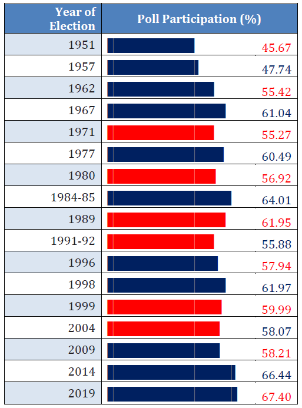
Media Coverage:
- Media are encouraged to cover elections transparently while maintaining vote secrecy.
- Special passes enable media personnel to enter polling stations and cover the voting and counting process.
Election Petitions:
- Electors or candidates can file election petitions alleging malpractice.
- These petitions involve the entire constituency and are tried by the High Court, potentially leading to re-election if upheld.


